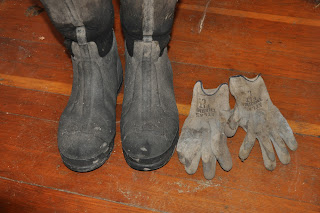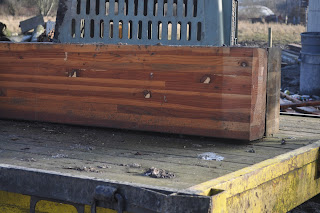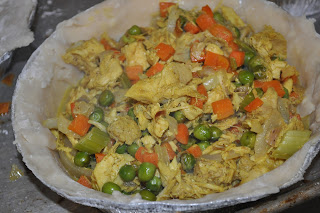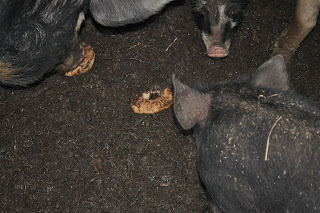This is a family operation all the way. Craig (pictured above) and Rose Gallington and their children run the shop, and it's located on their farm in the Wynoochee Valley, about 10 miles north of Montesano, WA
The shop is concrete floored, with all of the fixtures in stainless, and it's spotless. I asked Craig if he was WSDA or USDA, and he said that he'd just had the USDA inspector over the day before, and were probably going to get USDA inspected for both slaughter and cut-and-wrap.
That means that producers in that area will be able to sell cuts of meat and directly to food establishments, and will mean a higher price for their product than if they were to sell either farm-kill (which wynoochee meats does as well) or wholesale at the auction. Small meat shops are one of the best things that can happen to local meat producers, and I'm glad to see these guys going towards USDA slaughter.
This is the ribeye of the yak.
butter yellow fat -- what I usually see with grass fed beef.
Their facility is spotless, and if you'd like to have your meat cut in a local shop and you're in their area, you'll find them at 92 old wynooche road, montesano, wa. 360-249-MEAT (6328)
They also sell their own beef and pork, as C&R Cattle. You can't get much more local. Just wish they weren't a 2.5 hour drive from my farm (one-way!)


























































